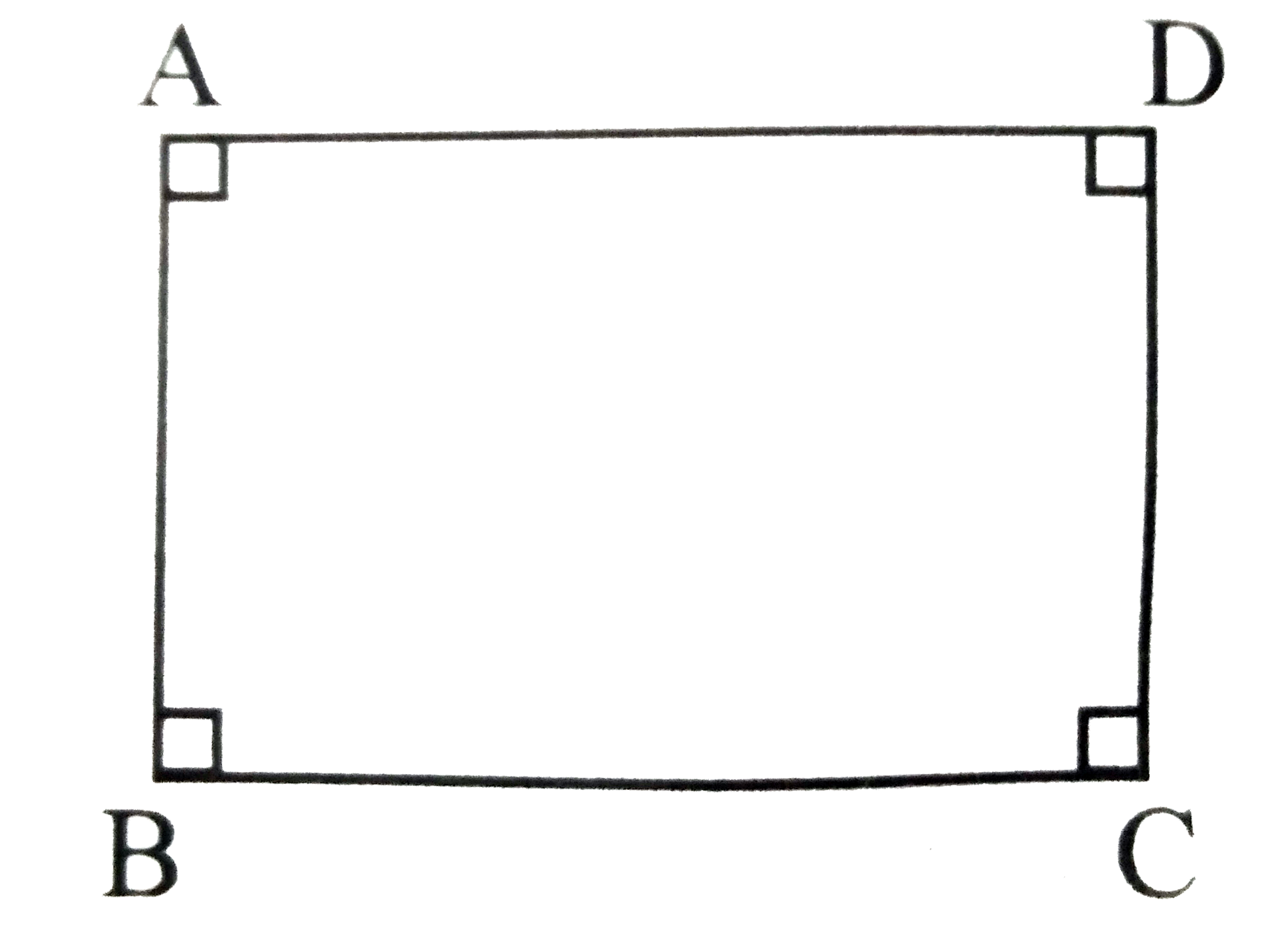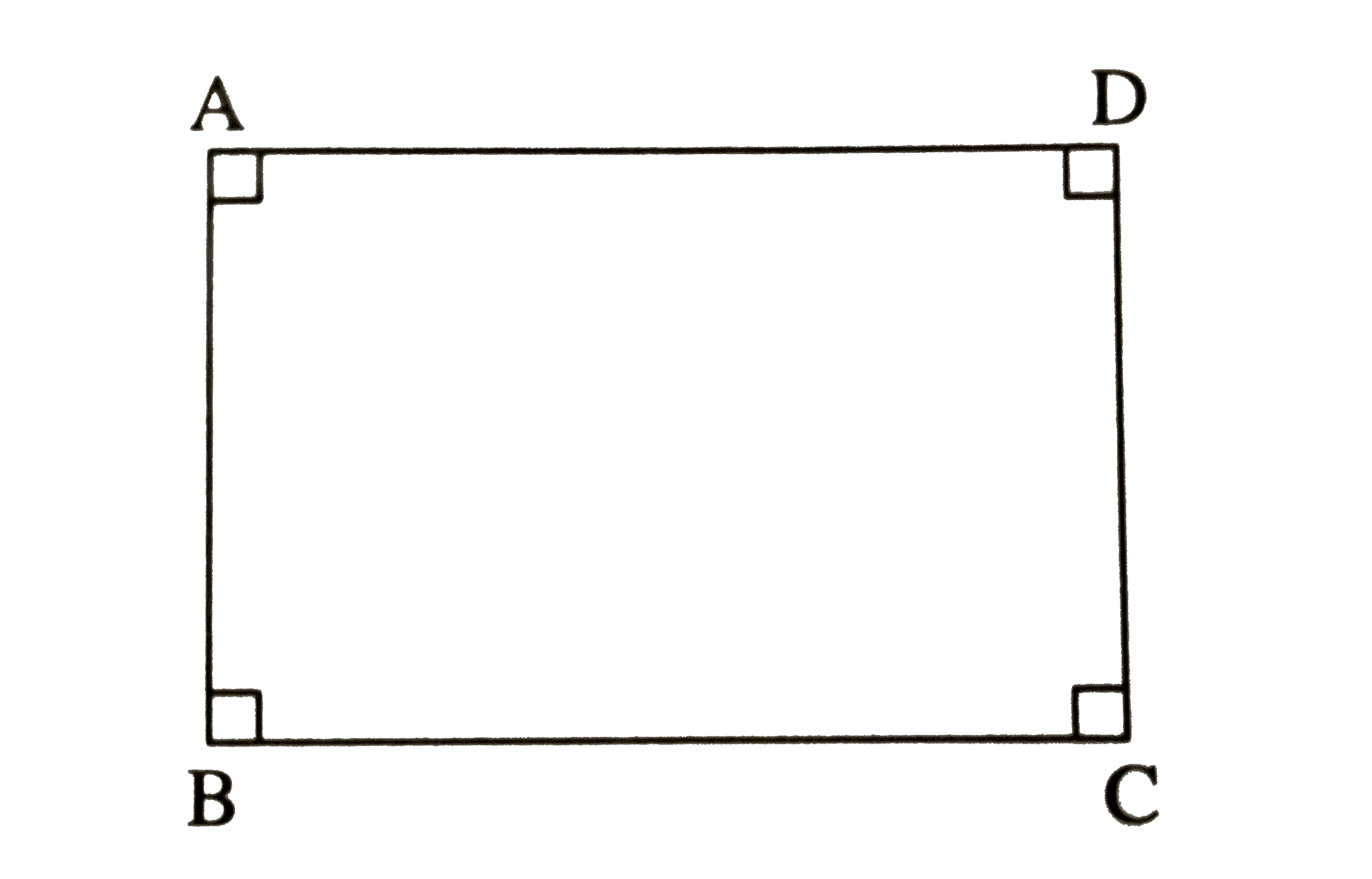Explain why a rectangle is a convex quadrilateral.
The correct Answer is:convex quadrilateral.
To explain why a rectangle is a convex quadrilateral, we can follow these steps:
1. Definition of Convex Quadrilateral:
A convex quadrilateral is defined as a four-sided figure where all interior angles are less than 180 degrees, and the diagonals lie entirely within the shape.
2. Properties of a Rectangle:
A rectangle is a type of quadrilateral where all four angles are right angles (90 degrees).
3. Checking the Angles:
Since each angle in a rectangle is 90 degrees, we can confirm that:
- 90 degrees is less than 180 degrees.
Therefore, all angles in a rectangle satisfy the first property of a convex quadrilateral.
4. Checking the Diagonals:
In a rectangle, the diagonals connect opposite corners and lie completely within the shape.
- This means that the diagonals do not extend outside the rectangle.
Thus, the second property of a convex quadrilateral is also satisfied.
5. Conclusion:
Since both properties of a convex quadrilateral are satisfied (all angles are less than 180 degrees and the diagonals lie within the shape), we can conclude that a rectangle is indeed a convex quadrilateral.
Final Statement:
Therefore, a rectangle is a convex quadrilateral because all its angles are less than 180 degrees, and its diagonals lie entirely within the shape.
---
A convex quadrilateral is defined as a four-sided figure where all interior angles are less than 180 degrees, and the diagonals lie entirely within the shape.
A rectangle is a type of quadrilateral where all four angles are right angles (90 degrees).
Since each angle in a rectangle is 90 degrees, we can confirm that:
- 90 degrees is less than 180 degrees.
Therefore, all angles in a rectangle satisfy the first property of a convex quadrilateral.
In a rectangle, the diagonals connect opposite corners and lie completely within the shape.
- This means that the diagonals do not extend outside the rectangle.
Thus, the second property of a convex quadrilateral is also satisfied.
Since both properties of a convex quadrilateral are satisfied (all angles are less than 180 degrees and the diagonals lie within the shape), we can conclude that a rectangle is indeed a convex quadrilateral.
Therefore, a rectangle is a convex quadrilateral because all its angles are less than 180 degrees, and its diagonals lie entirely within the shape.
Topper's Solved these Questions
- UNDERSTANDING QUADRILATERALSBOOK - MTG IIT JEE FOUNDATIONCHAPTER - UNDERSTANDING QUADRILATERALSEXERCISE - EXERCISE(MULTIPLE CHOICE QUESTION LEVEL-1)
35 Videos
- UNDERSTANDING QUADRILATERALSBOOK - MTG IIT JEE FOUNDATIONCHAPTER - UNDERSTANDING QUADRILATERALSEXERCISE - EXERCISE(MULTIPLE CHOICE QUESTION LEVEL-2)
13 Videos
- UNDERSTANDING QUADRILATERALSBOOK - MTG IIT JEE FOUNDATIONCHAPTER - UNDERSTANDING QUADRILATERALSEXERCISE - NCERT SECTION (EXERCISE 3.3)
12 Videos
- SQUARES AND SQUARE ROOTSBOOK - MTG IIT JEE FOUNDATIONCHAPTER - SQUARES AND SQUARE ROOTSEXERCISE - Olympiad/HOTS Corner
20 Videos
- VISUALISING SOLID SHAPESBOOK - MTG IIT JEE FOUNDATIONCHAPTER - VISUALISING SOLID SHAPESEXERCISE - OLYMPIAD/HOTS CORNER
10 Videos
Similar Questions
What is a Convex Quadrilateral?
View SolutionProve that, any rectangle is a cyclic quadrilateral.

View SolutionProve that, any rectangle is a cyclic quadrilateral.

View SolutionRewrite the following statement in the form p if only ifq: q: if a quadrilateral is equiangular, then it is a rectangle and if a quadrilateral is a rectangle, then it is equiangular.
View SolutionComplete each of the following, so as to make a true statement:
(i) A quadrilateral has ______sides.:
(ii) A quadrilateral has ______angles.:
(iii) A quadrilateral has ______vertices, no three of which are ______:
(iv) A quadrilateral has ______diagonals.:
(v) The number of pairs of adjacent angles of a quadrilateral is ______:
(vi) The number of pairs of opposite angles of a quadrilateral is ______:
(vii) The sum of the angles of a quadilateral is ______:
(viii) A diagonal of a quadrilateral is a line segment that joins two ______vertices of the quadrilateral.:
(ix) The sum of the angles of a quadrilateral is ______ right angles. :
(x) The measure of each angle of a convex quadrilateral is ______ 180 ∘ .:
(xi) In a quadrilateral the point of intersection of the diagonals lies in ______ of the quadrilateral.:
(xii) A point is in the interior of a convex quadrilateral, if it is in the ______ of its two opposite angles.:
(xiii) A quadrilateral is convex if for each side, the remaining ______ lie on the same side of the line containing the side.
View SolutionState whether the statements are true (T) or (F) false.
Rectangle is a regular quadrilateral.
View SolutionQ3) Explain how a square is: (a) a quadrilateral (b) a parallelogram (c) a rhombus (d) a rectangle
View SolutionWhat is the sum of the measures of the angles of a convex quadrialteral? Will this property hold if the quadrilateral is not convex? (Make a non convex quadrilateral and try!)
View SolutionExplain how a square is
a rectangle
View SolutionState whether the statements are true (T) or (F) false.
A kite is not a convex quadrilateral.
View Solution
